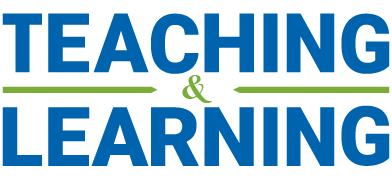This is the Coronavirus / COVID-19 remote learning home page. It is an evolving resource and will be updated frequently.
Welcome to the Coronavirus / COVID-19 remote teaching home page for Schulich faculty. This is an evolving resource that will be updated frequently.
As of March 16th, 2020, York University has cancelled all in-person classes and exams and shifted to online delivery of courses for the remainder of the F/W 2019-2020 and W 2020 academic terms.
The Schulich Teaching & Learning site, a partnership between the offices of the Associate Dean Academic, the Schulich Centre for Teaching Excellence and Information Services & Technology, will be sharing emerging technologies, innovative practices and the policies and guidelines needed to implement them effectively.
This is a guide to help instructors transition their courses to online delivery and allow students complete their current term. If you cannot find what you are looking for, please contact ada@schulich.yorku.ca (for academic or teaching-related matters) or askit@yorku.ca (for technical help).
Here are some important first steps to take in making the shift to online course delivery:
- Become familiar with the University’s and Schulich’s Policies for Completion of the FW/W 2020 Academic Term
- For each course you teach, determine which course learning outcomes (CLOs) have been sufficiently taught and assessed and which have not
- Create a plan to achieve the remaining learning outcomes through online instruction and activities
- Redesign your remaining assessments for the online environment
- Communicate frequently with your students
- Attend training for online course delivery tools
- Recognize the extraordinary times we are in and adopt a proactive approach!
Become Familiar with the University’s and Schulich’s Policies for Completion of the FW/W 2020 Academic Term.
Review important communications from the York University Senate regarding COVID-19 and the impact on academic activities at the York University Secretariat website.
Stay tuned for regular email updates from various Schulich departments, including the Office of the Associate Dean Academic, Student Services and Schulich IS&T. For a repository of all COVID-19-related communications see here.
For Each Course You Teach, Determine which Course Learning Outcomes (CLOs) Have Been Sufficiently Taught and Assessed and Which Have Not.
Review your course learning outcomes (CLOs) and determine which outcomes have been achieved at this point in the course and which have not.
If you feel confident that your outcomes have been met, consider the following option approved by Senate Executive:
Where graded assignments amount to 70% or more of the final grade in a course, the instructor may give students the option of receiving a final grade that is based on a re-weighting of assignments already completed, provided the instructor is satisfied that the learning objectives of the course have been achieved and that fairness to students and academic integrity are preserved. Students must still have the option of completing additional assignments that follow the original grading scheme in the course, understanding that this decision may require deferred evaluations which may delay course completion.
It is the instructor’s choice whether to trigger this ‘70%’ option. However, it is important to ask yourself the following question: Will my decision to redistribute existing grades disadvantage any students? Students should not disadvantaged by changes made to their course grading schemes as a result of this disruption.
Create a Plan to Achieve the Remaining Learning Outcomes through Online Instruction and Activities.
There are a number of ways you can deliver lecture content and create interaction with your class in an online environment. Consider the following options:
Synchronous vs. Asynchronous Delivery of Lecture Content
There are two main approaches to moving the lecture online. In synchronous delivery, instructors can use Zoom or other similar platforms to broadcast their lectures to students during the regularly scheduled lecture. The class meets up and interacts in ‘real-time’. In asynchronous delivery, instructors prepare their course materials in advance for students to access at a time of their choosing. Interactions between the class can take place at any time. For example, instructors can record their lectures in advance, share with students via Canvas and conduct the class discussions separately. Instructors may also wish to use a mix of these methods, for example a 90 minute recorded lecture and a 90 minute interactive Zoom meeting.
Learn More
Discussion, Interaction and Student Presentations
One hallmark of the Schulich learning experience is the quality of class contribution brought by our diverse student body. We also emphasize effective communication in many of our courses. Students will still need the opportunity to practice and receive feedback on these skills. As we move to learning at a distance, instructors may need to open up new channels for these contributions. A mix of Zoom Breakout Rooms, Polling and Canvas Discussions can provide opportunities for active practice and reflection.
Learn More
Redesign Your Remaining Assessments for the Online Environment.
Senate Executive has granted Course Directors the ability to reduce the number of assignments, and to make changes to the kind and weight of assignments (including tests and examinations) provided the changes do not disadvantage students and preserve academic integrity and, where relevant, accreditation requirements.
When redesigning assessments, ask yourself the following questions:
- How can I assess my remaining CLOs with an assessment that will work in an online environment and still maintain the academic integrity of the course?
- Will my redesigned assessments disadvantage my students?
Answering these questions won’t always be easy and straightforward, but if you are willing to get a bit creative, options emerge. In addition to simply shifting quizzes and exams online, consider other assessment formats:
- Summaries of specific course content with application to real-life cases
- Annotated bibliography of relevant journal articles
- Creative reflection assignment
- Digital storytelling or digital publishing assignment
- Recorded or live presentations via Zoom
- Recorded demonstrations of procedural knowledge or a performance task
- A portfolio collection representing work done throughout the term
- Primary-source analysis or article critique
- Infographic, video, audio recording, graphic text, or other multimedia project demonstrating mastery of the term’s work
- Dynamic multiple-choice exams built on platforms provided by textbook publishers
Learn More
Communicate Frequently with Your Students.
The current situation is stressful for faculty, staff and students. You may notice elevated levels of anxiety among your students as they grapple with technological challenges, the reality of social isolation, modified assignments, how to organize and manage the various groups they are part of, uncertainty about their exams and more generally how their current situations will work out. It’s a lot to handle for anyone and especially for students that are struggling with mental health. Students with accommodation needs and international students may also need extra support.
As much as possible, respond with kindness and reassurance. In practical terms, be proactive and communicate frequently and in detail with your students about what you are planning to do for the remainder of the course and reassure them that while there will be some hurdles to cross and glitches to deal with, everything will work out. The sooner you give your students a sense of clarity about your course’s roadmap for the coming weeks, the better.
Please also ensure that your messages to students align with the messaging coming from the ADA’s Office. The repository of COVID-19-related communications can be accessed here.
Dealing with Accommodation Needs
Please reach out to your students with accommodation needs. With remote teaching, the context has changed and with that likely the way your students need to be accommodated. Some might need less complex accommodations because you may be changing a sit-in exam to an essay, for example. But some new requests may arise. For example, some students may find the live virtual classroom challenging. Some may ask for accommodation to deal with online testing. Here are some recommendations:
- Check in with any student in your class that has an accommodation of some kind and assess what that accommodation might mean in the new context. Then, try to agree with that student on specific accommodations for the remote teaching period and any new/altered assessments. If you try but struggle to find common ground with the student contact your area coordinator first, then the ADA if necessary.
- If you are conducting live Zoom classes, consider recording the session with transcription enabled so students who struggle with the online format are able to revisit the class.
- Consider setting different time limits for test submissions for students with accommodation needs.
Hosting Office Hours Remotely
Instructors’ office hours will be more important than ever. Zoom and Canvas both offer features to support office hours including, waiting rooms and appointment sign-ups.
Learn More
Attend Training for Online Course Delivery Tools.
The Schulich Teaching and Learning support team are here to support instructors and students. We will be offering training sessions and technical support throughout.
- See Upcoming Events & Training
- Support: askit@yorku.ca
- Phone Support: Schulich Help Desk: (416) 736 2100 Extension 66356
- Urgent Support: submit a request here.
Recognize the Extraordinary Times We Are in and Adopt a Proactive Approach.
While shifting a course to an online environment can feel overwhelming, adopting the right approach can make all the difference:
Teaching during times of potential disruption requires creative and flexible thinking about how instructors can support students in achieving essential core course learning objectives. […] While the process will no doubt feel unfamiliar and at times possibly frustrating, try as much as possible to be patient. There will always be hiccups, but times of disruption are, by their nature, disruptive, and everyone expects that. Be willing to switch tactics if something isn’t working. Above all, stay focused on making sure the students are comfortable, and keep a close eye on the course learning goals–while you might not be able to teach something exactly the way you imagined, as long as you’re still meeting the learning goals of the course, you’re doing fine.
Source: Cohn & Seltzer, Teaching Effectively Teaching Effectively During Times of Disruption
Learn More
Schulich Resources
Effective Remote Teaching
- Harvard University – Teaching Remotely
- Stanford University – Teaching Effectively During Times of Disruption
COVID19 Higher Education Updates
- York University – Coronavirus Information and Update
- York University – COVID-19: Information and Decisions Pertaining to Academic Activities
- University Professional Continuing Education Association – COVID19 Resources for Higher Education



